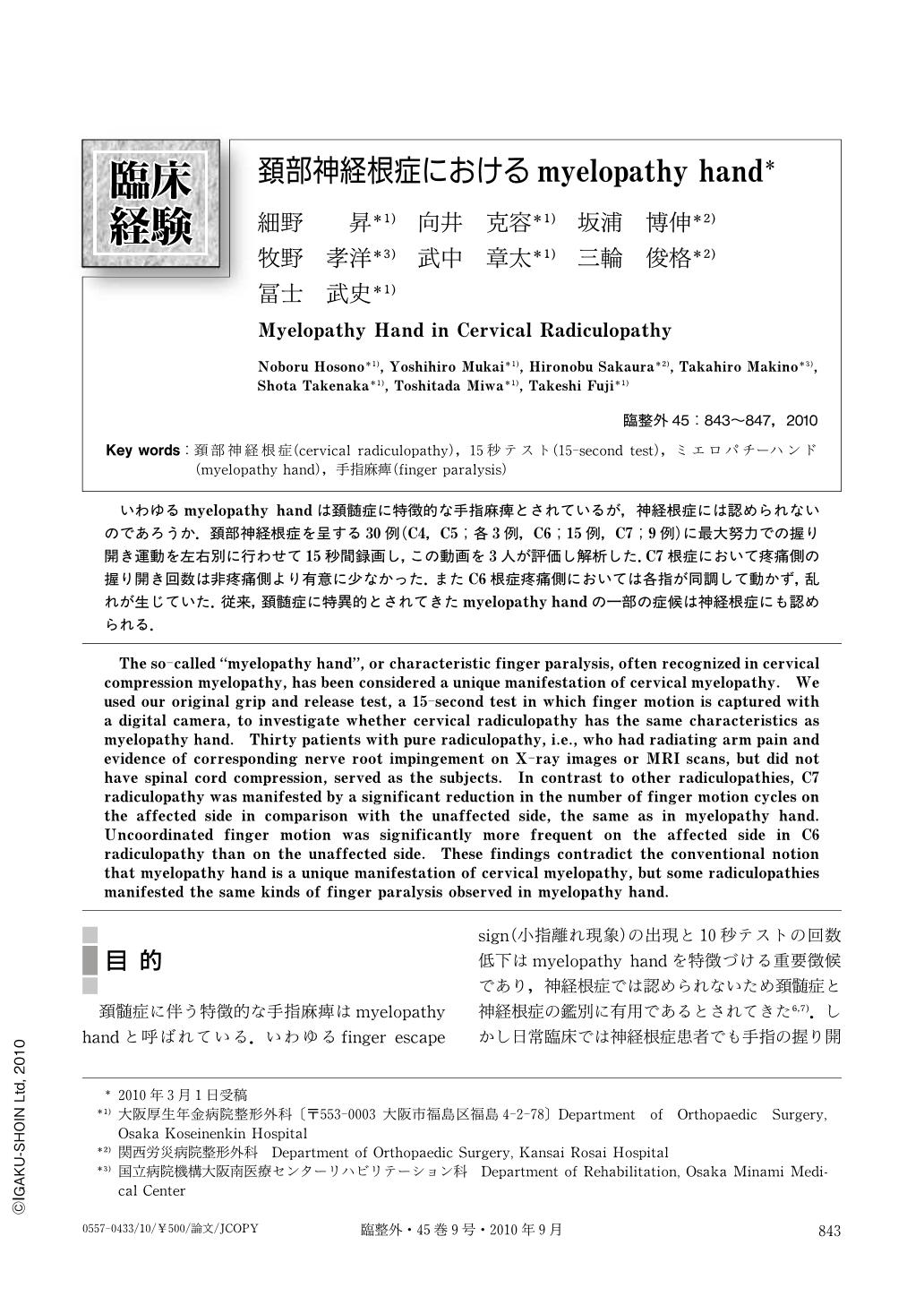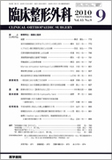Japanese
English
- 有料閲覧
- Abstract 文献概要
- 1ページ目 Look Inside
- 参考文献 Reference
いわゆるmyelopathy handは頚髄症に特徴的な手指麻痺とされているが,神経根症には認められないのであろうか.頚部神経根症を呈する30例(C4,C5;各3例,C6;15例,C7;9例)に最大努力での握り開き運動を左右別に行わせて15秒間録画し,この動画を3人が評価し解析した.C7根症において疼痛側の握り開き回数は非疼痛側より有意に少なかった.またC6根症疼痛側においては各指が同調して動かず,乱れが生じていた.従来,頚髄症に特異的とされてきたmyelopathy handの一部の症候は神経根症にも認められる.
The so-called “myelopathy hand”, or characteristic finger paralysis, often recognized in cervical compression myelopathy, has been considered a unique manifestation of cervical myelopathy. We used our original grip and release test, a 15-second test in which finger motion is captured with a digital camera, to investigate whether cervical radiculopathy has the same characteristics as myelopathy hand. Thirty patients with pure radiculopathy, i.e., who had radiating arm pain and evidence of corresponding nerve root impingement on X-ray images or MRI scans, but did not have spinal cord compression, served as the subjects. In contrast to other radiculopathies, C7 radiculopathy was manifested by a significant reduction in the number of finger motion cycles on the affected side in comparison with the unaffected side, the same as in myelopathy hand. Uncoordinated finger motion was significantly more frequent on the affected side in C6 radiculopathy than on the unaffected side. These findings contradict the conventional notion that myelopathy hand is a unique manifestation of cervical myelopathy, but some radiculopathies manifested the same kinds of finger paralysis observed in myelopathy hand.

Copyright © 2010, Igaku-Shoin Ltd. All rights reserved.


